HMAS Adelaide high and dry – Canberra on trial
Share the post "HMAS Adelaide high and dry – Canberra on trial"

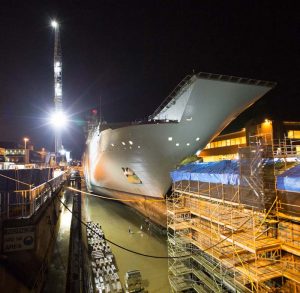
Royal Australian Navy amphibious ship HMAS Adelaide has entered the Captain Cook Graving Dock at Garden Island in Sydney for repairs to her propulsion system.
The docking will incorporate a range of activities including access to, and a detailed inspection of the propulsion pods, defect rectification and maintenance.
Defence is working closely with industry and the original equipment manufacturers while HMA Ships Canberra and Adelaide are in test and evaluation period.
This period is where issues are found and addressed to ensure all aspects of the operation of these ships is considered before they reach the Full Operational Capability (FOC).
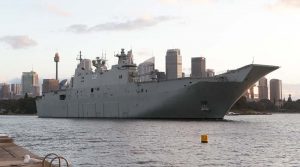
Meanwhile, sister ship HMAS Canberra left homeport at Garden Island yesterday, returning to sea to conduct sea trials off Sydney.
These trials are engineering focused to test interim repairs made to her propulsion pods and to verify the state of the system.
Defence says the sea trials are being conducted in conjunction with industry partners including original equipment manufacturers.
––––––––––––
Sir Jeffrey Armiger’s view: Defence was upset recently by a journalist’s suggestion that the amphibious ships, known as Landing Helicopter Docks (LHD), were purchased by the government for the purposes of responding to natural disasters, and attacked the journalist for demonstrating a lack of understanding of the ships’ primary warfighting capability.
It has long been my view that Defence’s own PR spin doctoring is actually the root cause of civilian journalistic misinterpretations of this nature.
When talking about these ships, the ADF and the government always seek to downplay warfigthting roles and capabilities but talk up humanitarian and disaster-relief capacity.
For example, in November 2014, then Minister for Defence David Johnston said, “This LHD is a true multi-purpose warship ideally configured to carry out humanitarian assistance or transport an embarked force complete with their equipment and aviation assets for a peacekeeping mission” – humanitarian first, [non-descript] embarked force second [on a peacekeeping mission].
Navy’s own web site describes the LHDs as ships that will, “contribute directly to the defence of Australia and its national interests [vague motherhood statement], and also allow the ADF to provide large-scale humanitarian assistance at home or in our region”. In explaining the ships’ roles further, Navy deals with war fighting in 36 words, but lavishes 66 words on the humanitarian roles.
Navy Daily, an official Royal Australian Navy news bulletin, in reporting a visit to HMAS Canberra by Defence Minister Marise Payne, said on 6 October 2015, “Department of Foreign Affairs and Trade officials, as well as other government agencies, are supporting the Australian Defence Force to develop this amphibious capability in preparation for future humanitarian assistance and disaster relief operations [first priority], as well as providing security within the region [secondary role].”
It’s not just ships either – even visiting USAF B-52 strategic bombers somehow get to fly the humanitarian-assistance-capability flag when Defence gives journalists a heads up that one is visiting.
It’s sickening.
And it came back to bite the Navy in this instance.
And it’s their own fault.
In our humble opinion.
.
.
.
.
.
.
.

.
.
Share the post "HMAS Adelaide high and dry – Canberra on trial"

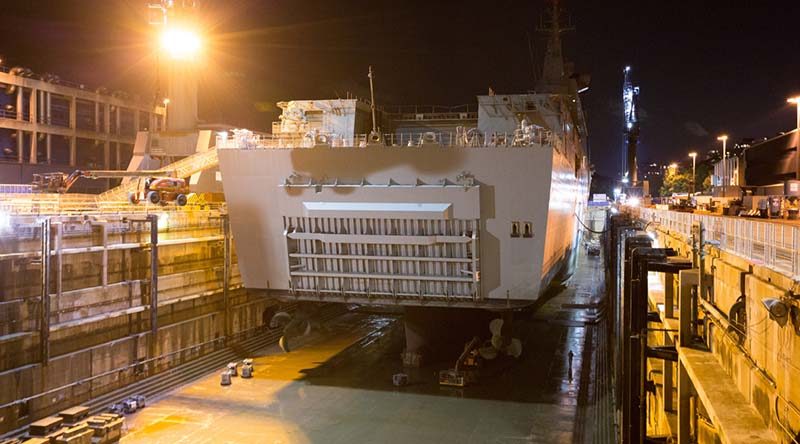



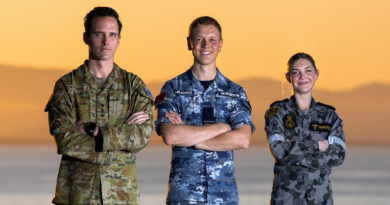
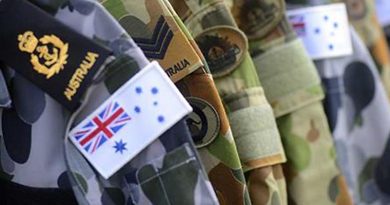
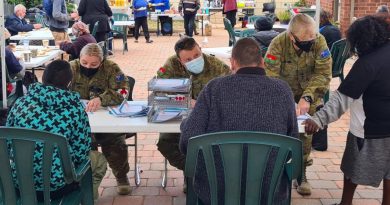
These electric Azipod stern-drive motors have been problematic from the outset.
Several cruise ships e.g Norwegian Star, had to be towed back to port well before Adelaide & Canberra were even built !
If the navy gave out proper info on what was going on with the LHDs, then the media would not have to try and figure it out. The stories i have heard seem true anyway. The ships are busted, trials or no trials.
Amen Mark.
Of course, they wouldn’t need sea trials if there wasn’t something wrong – and certainly wouldn’t need dry-docking, which is no small chore for a 28,000 tonne ship!